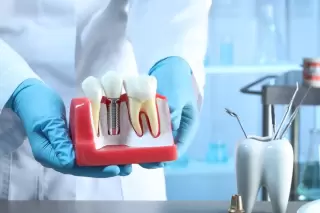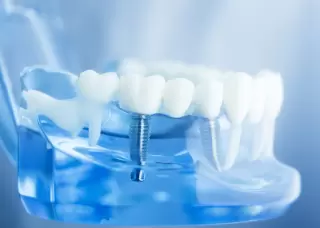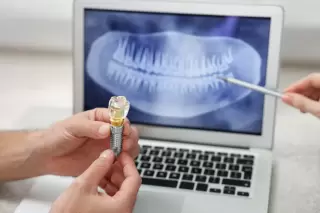Dental Implants: The Best Replacement for Missing Teeth
Explore Types of Dental Implants
Tooth loss can be devastating
Tooth loss can have devastating effects, leading to impaired dental function, jawbone degeneration, and cosmetic concerns. Thankfully, advanced dental procedures, such as dental implants are available to patients. Dental implants are titanium posts that integrate with your jaw to support a range of restorations.
These titanium posts help restore both form and function to your smile. As a matter of fact, dental implants are the only type of restorative procedure that stimulates the jawbone, similar to the root of a tooth. As a result, bone stimulation prevents bone recession and preserves oral health.
What are Dental Implants?

Dental implants are small, threaded titanium posts, which are placed in the jaw to replace missing tooth roots. The titanium posts become a permanent part of your jaw and serve as a solid foundation for esthetic, natural restorations.
In most cases, a dental crown is supported by one post, an implant-supported bridge by two or more posts, and a permanent denture by four or more posts. Then, abutments are attached to the top of the implants to securely hold your restorations in place. These abutments and your dental implants create a lasting solution for tooth loss. With proper care, the implant restoration can last a lifetime.asdfsf
Benefits of Dental Implants
One of the most unique advantages of dental implants is the fact that they prevent bone loss. Unlike traditional replacement options for tooth loss, implants stimulate the jawbone in the same way that natural tooth roots can. This process, which helps your bone respond to mechanical pressure, is called the piezoelectric effect.
When you chew, signals are transmitted from your jawbone to your brain. In response, nutrients are sent to the bone to keep it healthy and strong. Implants continue to send these signals for decades, and are considered to be the most successful and reliable tooth replacement option available today.
Because traditional alternatives such as bridges, partials, or dentures do not mimic natural teeth roots, bone density will decrease over time, resulting in jawbone recession. This degeneration of bone can lead to a lack of support for the facial structures, causing a concave or “sunken-in” appearance.
As noted above, implants provide a wide array of benefits. Furthermore, dental implants offer:
Durability
Improved Aesthetics
Increased Confidence
Improved Speech
Optimal Function
No Cavities
Predictability
Preservation of Healthy Teeth

Candidate For Implants
Your oral and overall health is of the utmost importance when considering dental implants. Sufficient jaw bone is needed for implants and implant-supported restorations.
Healthy gum tissue, free of periodontal disease is necessary before placing an implant. After all, your dentist wants implant to feel like your own, and last forever.
- You may need a dental implant if:
- Missing a tooth from a dental injury
- Lost a tooth due to periodontal disease
- Other reason for missing teeth
Preparing for a Dental Implant
Before having dental implants placed, our dentists will follow routine steps to assess your oral, medical and general health. We will carefully examine your oral cavity, including the area of the missing tooth. Also, our doctors will assess your bite and evaluate any aesthetic concerns.During an in-depth consultation, our doctors can determine if you require any procedures to prepare your mouth for successful treatment. In some cases, prerequisite procedures may be necessary for successful treatment. Some common preparatory procedures include:
- Tooth Extraction
- Bone Grafts
- Sinus Lifts
- Periodontal Therapy
One or more restorative procedures may be necessary to prepare your oral cavity. On the other hand, some can simply improve the longevity or durability of your results.
Tooth Extractions
Bone Grafts
Sinus Lifts
Periodontal Therapy

Can dental implants preserve bone?
This is one of the most important features of dental implants. Once in place and supporting teeth, everyday functional forces (eating, smiling, talking) stimulate the surrounding bone, which responds by becoming stronger and denser.
Like all things, there are limits as to how much an implant can do. For that reason, you may require one or more procedures to prepare your oral cavity for implantation.

Bridge vs Implant
Both a bridge and a dental implant are solutions for replacing a missing tooth.
A bridge provides a replacement tooth by using teeth on either side of the missing tooth for support. Teeth adjacent to the missing tooth (or teeth) will need to be reduced, which may compromise the healthy teeth. Since a bridge does not replace the missing root structure, you are at an increased risk of bone loss over time. Keeping a bridge clean requires frequent cleaning to prevent bacteria buildup.
Another option is a dental implant, which serves as an artificial root, anchoring the replacement tooth in place. This also helps protect and preserve the area from tissue loss and recession. An implant can be cared for just like any natural tooth. It also does not require the removal of potentially healthy tooth structure from the neighboring teeth to support it.
